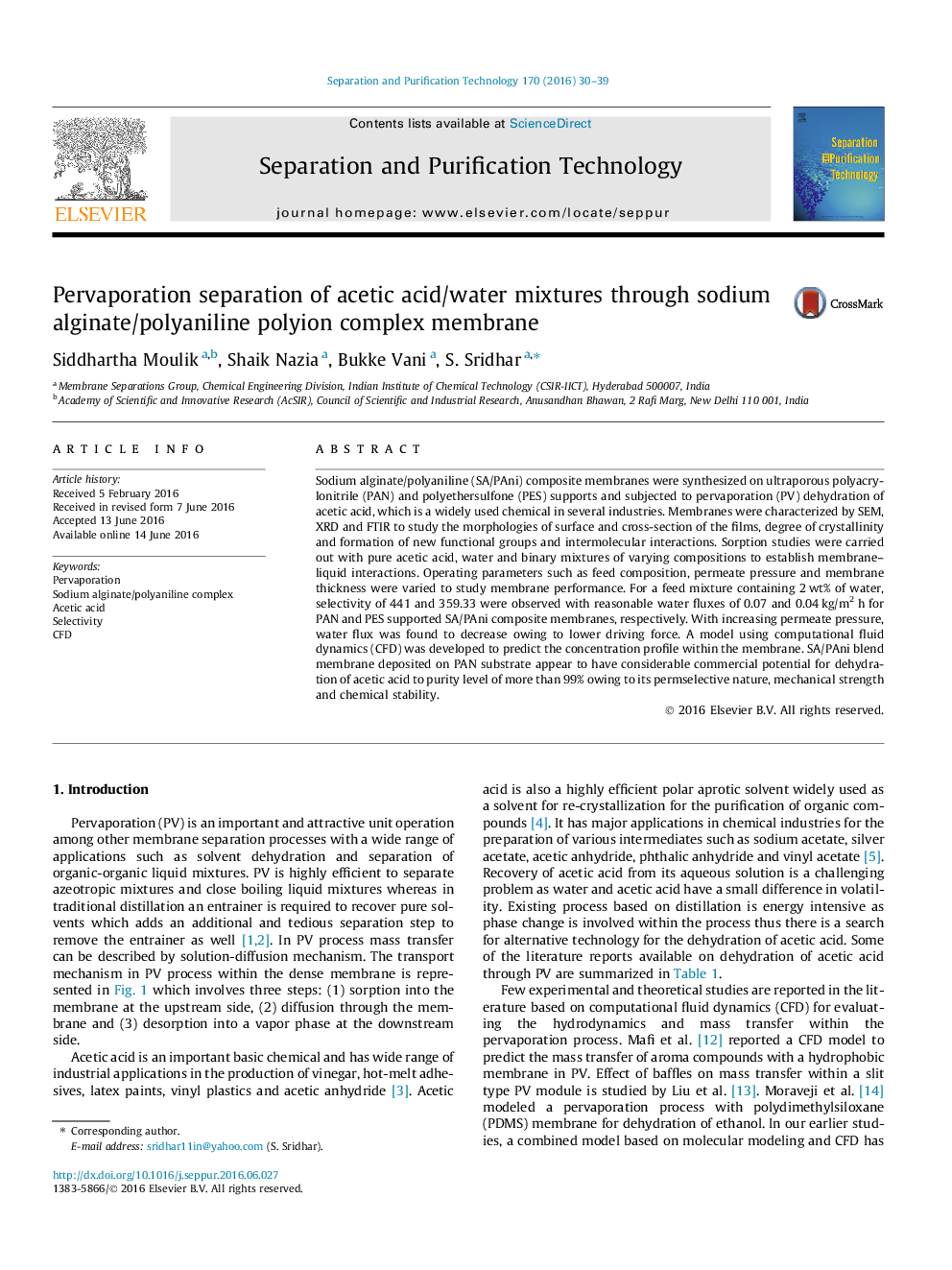| Article ID | Journal | Published Year | Pages | File Type |
|---|---|---|---|---|
| 639801 | Separation and Purification Technology | 2016 | 10 Pages |
Abstract
Sodium alginate/polyaniline (SA/PAni) composite membranes were synthesized on ultraporous polyacrylonitrile (PAN) and polyethersulfone (PES) supports and subjected to pervaporation (PV) dehydration of acetic acid, which is a widely used chemical in several industries. Membranes were characterized by SEM, XRD and FTIR to study the morphologies of surface and cross-section of the films, degree of crystallinity and formation of new functional groups and intermolecular interactions. Sorption studies were carried out with pure acetic acid, water and binary mixtures of varying compositions to establish membrane-liquid interactions. Operating parameters such as feed composition, permeate pressure and membrane thickness were varied to study membrane performance. For a feed mixture containing 2Â wt% of water, selectivity of 441 and 359.33 were observed with reasonable water fluxes of 0.07 and 0.04Â kg/m2Â h for PAN and PES supported SA/PAni composite membranes, respectively. With increasing permeate pressure, water flux was found to decrease owing to lower driving force. A model using computational fluid dynamics (CFD) was developed to predict the concentration profile within the membrane. SA/PAni blend membrane deposited on PAN substrate appear to have considerable commercial potential for dehydration of acetic acid to purity level of more than 99% owing to its permselective nature, mechanical strength and chemical stability.
Related Topics
Physical Sciences and Engineering
Chemical Engineering
Filtration and Separation
Authors
Siddhartha Moulik, Shaik Nazia, Bukke Vani, S. Sridhar,
